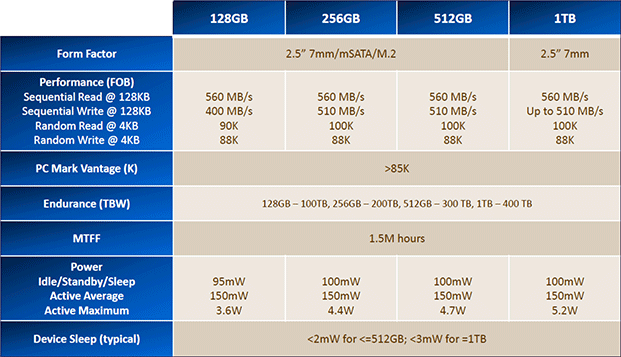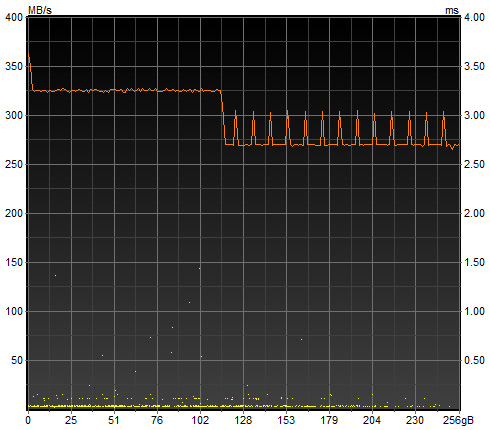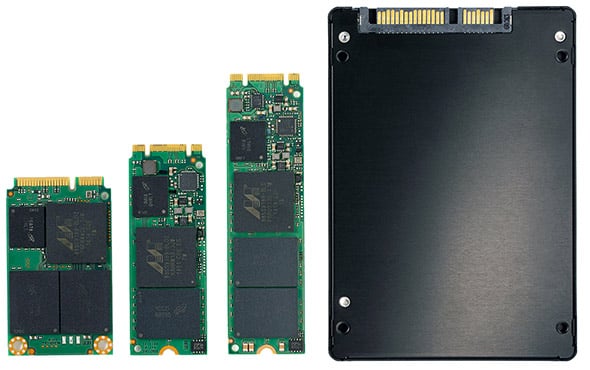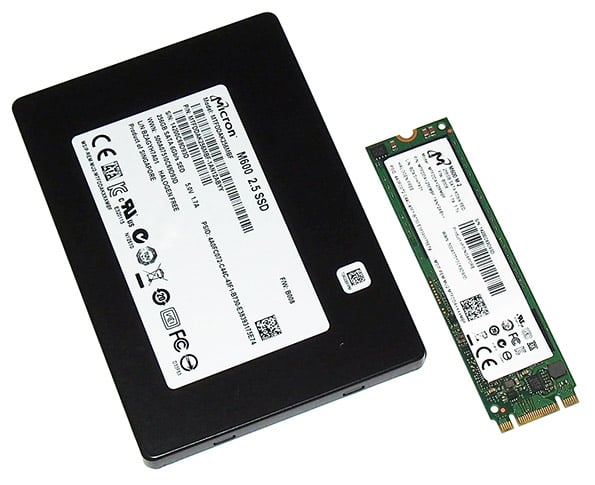Micron M600 SATA & M.2 Solid State Drive Review
Introduction and Specifications
Samsung made some waves earlier this year with the introduction of its 850 Pro family of solid state drives and the first commercial use of 3D stacked NAND Flash memory. Micron is striking back today with a lower manufacturing process geometry in conventional NAND, however, and a new Flash technology it claims, will accelerate performance more effectively than other competing solutions.
The new Micron M600 family of solid state drives will launch at capacities ranging from 128GB to 1TB across multiple form factors. Conventional 2.5” SATA drives, mSATA, and the PCIe-capable M.2 platform are all supported with multiple drive sizes and form factors, as shown below.
The M600 uses Micron's newest 16nm NAND, which will allow the drive to hit a better cost-per-GB than previous products. One of the downsides to smaller NAND geometries, however, is that unlike other products, smaller NAND tends to actually be slower NAND. The reason manufacturers continue pushing smaller geometries is that the increases in density have usually more than offset the modestly lower performance. Better SSD drive controllers and more streamlined firmwares have also mostly hidden the losses, as have faster interfaces.
|

Micron M600 Solid State Drives -- Find Them At Amazon
From the outside, the SATA Micron M600s looks just like many of the other 2.5” solid state drives currently on the market. The drives have a slim, 7mm Z-Height and are adorned with a decal listing the product family, model number and some other identifying information. Other than that though, there’s not much to see. The interesting bits on the M.2 drive you see pictured here are completely covered by a decal.
Open up an M600 and you’ll find that the drive is built around the tried-and-true Marvell 88SS9189 SATA 6Gbs controller, which has been used by a variety of other SSD manufacturers as well. These particular drives are a 1TB model and a 256GB model, and as you can see, the PCB on the 1TB drive is outfitted with 16 pieces of NAND—or more specifically, 16nm MLC NAND--and a bit of DRAM cache as well.
The 256GB drive has only 8 pieces. All of Micron's M600 drives are outfitted fitted with an LP DDR2 DRAM cache. The 1TB drive has 1GB of cache memory and lower capacity 128GB - 512GB drives have 512MB.
The evolution of drive caching and write acceleration can be thought of as a method of extending drive performance through more sophisticated management even as the underlying NAND actually becomes slower. As of today, NAND can be classified into three major types -- SLC NAND contains one bit of information per cell, MLC NAND contains two bits, and TLC NAND contains three bits. In the past, entire drives were made of a single type of NAND, with SLC NAND being the fastest, most expensive, and most durable, while TLC NAND was somewhat slower, cheaper, and less robust. MLC NAND falls somewhere in the middle.
It's important to understand that these distinctions happen within the controller chip. MLC NAND can still be treated like SLC, with just one bit of data written to each cell, and if the manufacturer does that, the NAND will be much faster. Samsung's 840 EVO was one of the first drives to experiment with defining a section of an SSD as SLC NAND while the bulk of the drive used TLC NAND. Now Micron is adapting a similar strategy but expanding on the amount of available fast storage and allocating it more flexibly.
Micron calls the technology Dynamic Write Acceleration. Micron's feature differs from Samsung's caching strategy for the 840 EVO in several ways. First, it's not available on every drive, though there's no explanation for why -- the M600 2.5-inch 512GB and 1TB drives don't offer Dynamic write acceleration.
Second, Micron alters the amount of space allocated to DWA changes on the fly depending on controller load, workload, and available free space. Under certain circumstances this can apparently offer a much larger boost than a conventional static cache like the 840 EVO uses, though of course these figures are from the manufacturer and should be taken with a grain of salt:

According to Micron, accelerating writes in this fashion can lead to dramatic improvements in total power consumption because, while the drive consumes slightly more power in some cases, it still slashes the amount of time required to perform the writes. There are a few caveats with Dynamic Write Acceleration. It cannot accelerate sustained random write workloads indefinitely -- eventually the drive will begin performing garbage collection, and write acceleration doesn't function when it's taking out the trash.

Write Performance Across The Entire 256GB M600 - Notice The Drop Off
Micron also notes that Dynamic Write Acceleration can increase write amplification as drive wear, since data is being written to the drive twice -- once as SLC, once as MLC. The company compensates for this by using "proprietary NAND trims to optimize for 50% more NAND endurance" than SSDs that do not use DWA. This explains why these drives are rated for up to 400TB of writes, which is absolutely huge for a consumer-class SSD, and may also be the reason why the 2.5-inch 512GB and 1TB flavors don't feature the technology. Micron can charge more for M.2 and mSATA variants and absorb some of the cost of binning high-quality NAND that way, whereas 2.5-inch drives are subject to more robust price competition.











